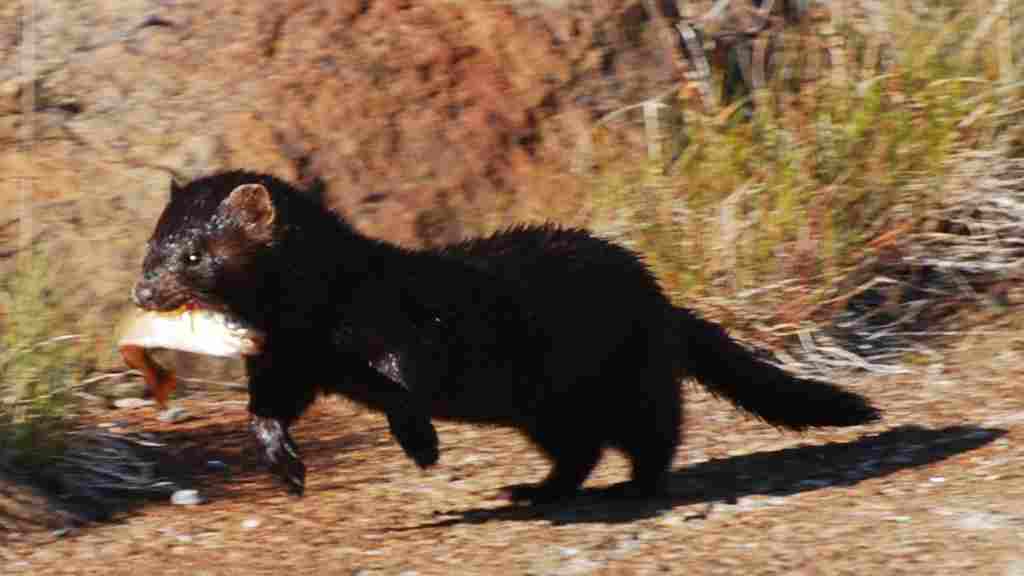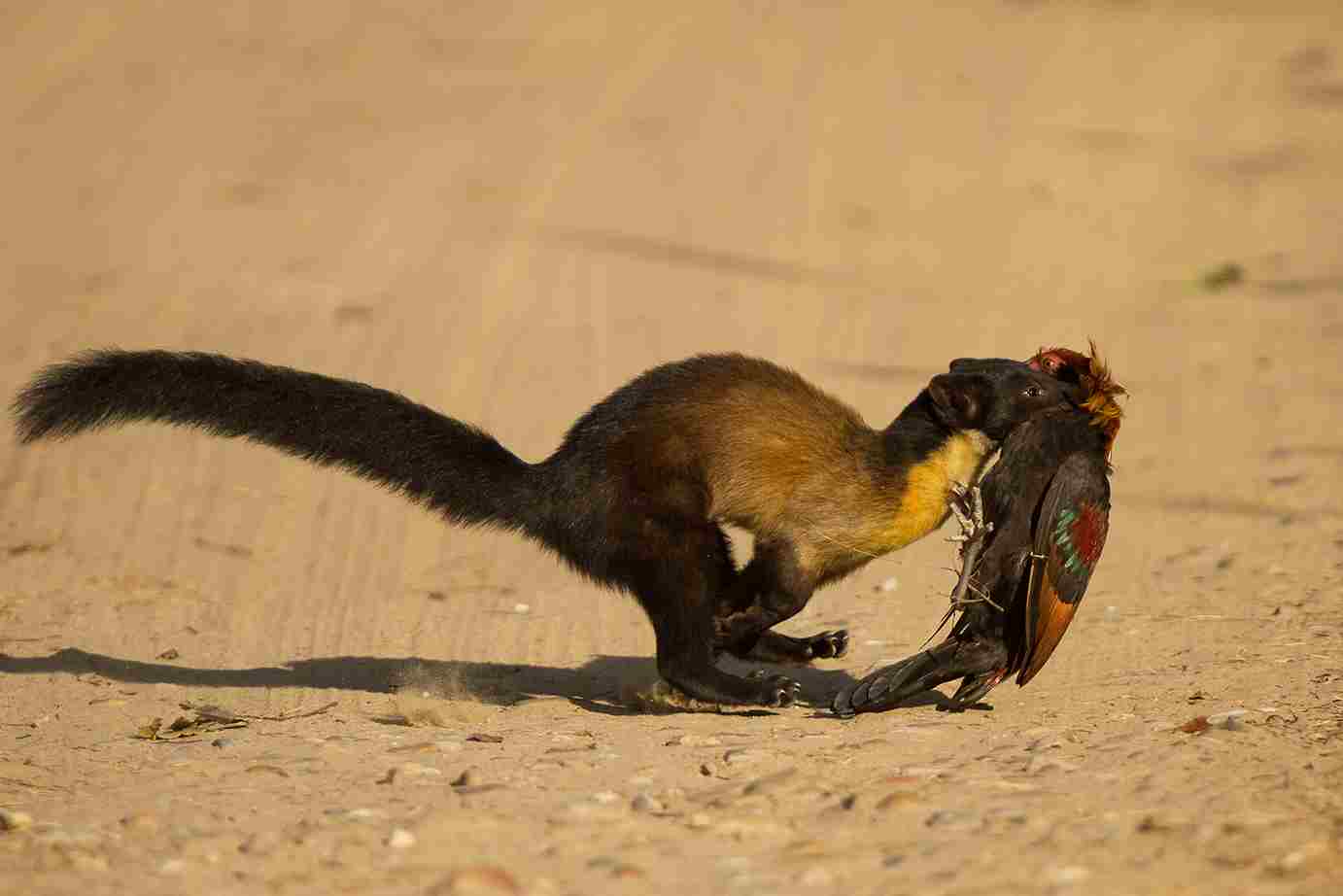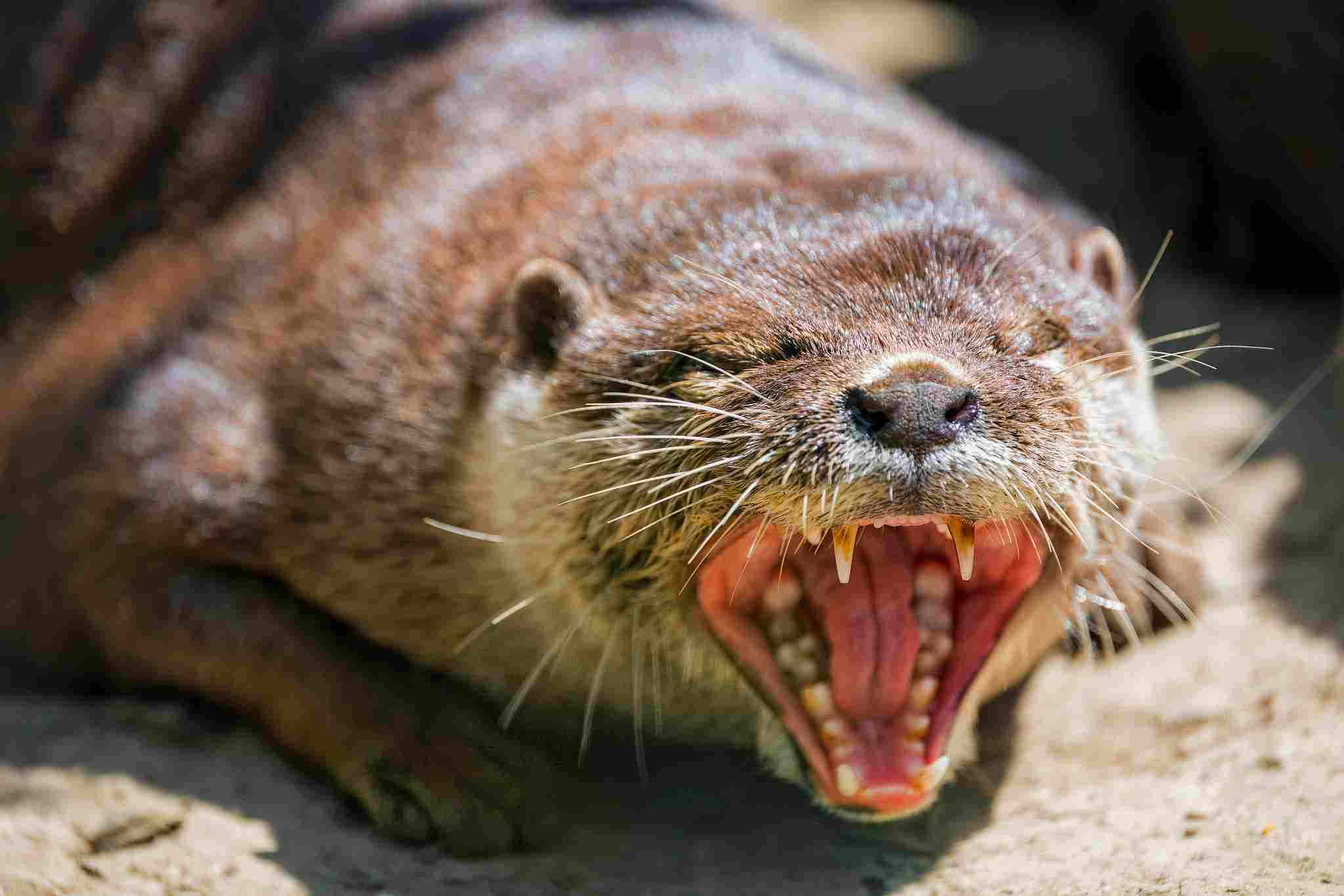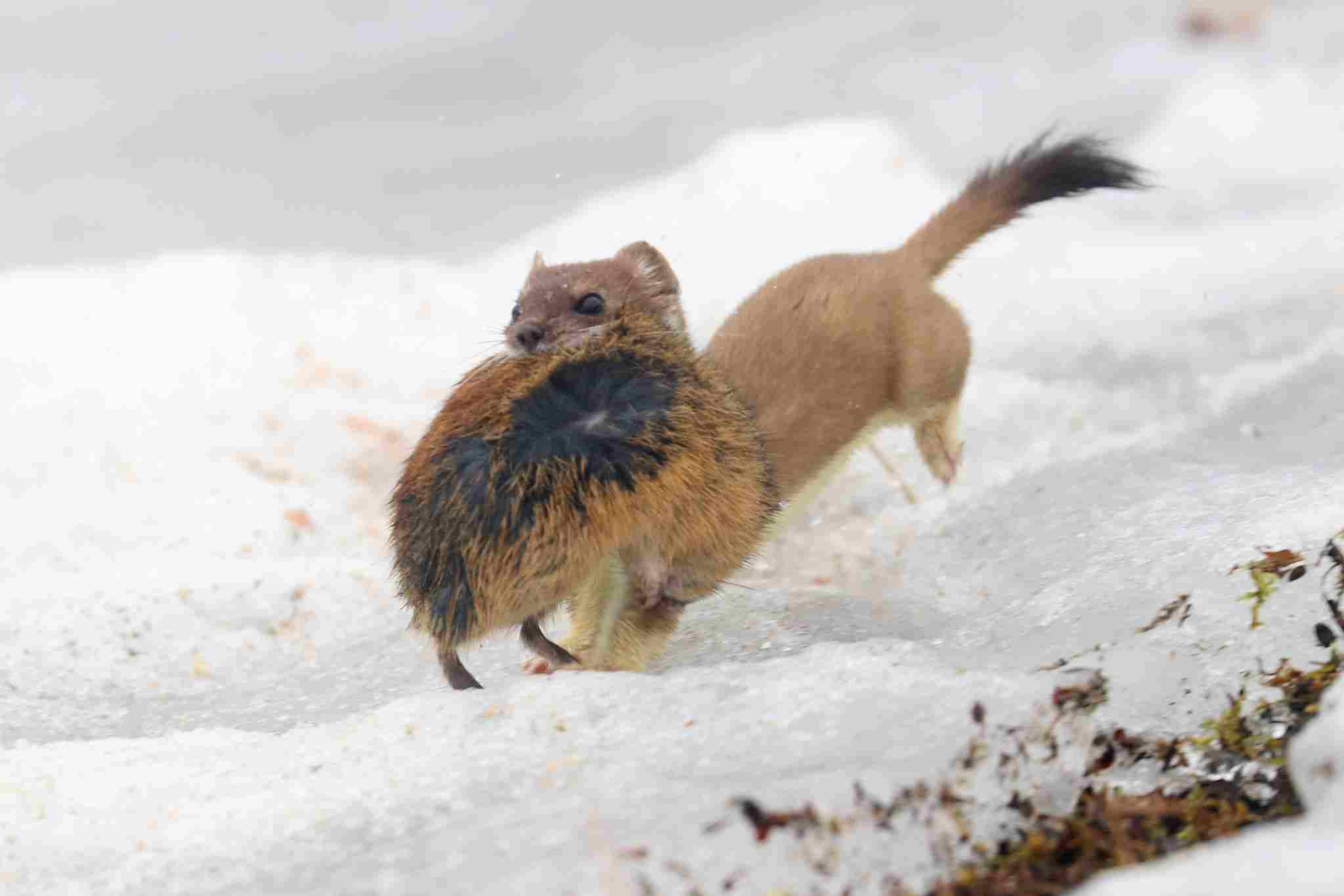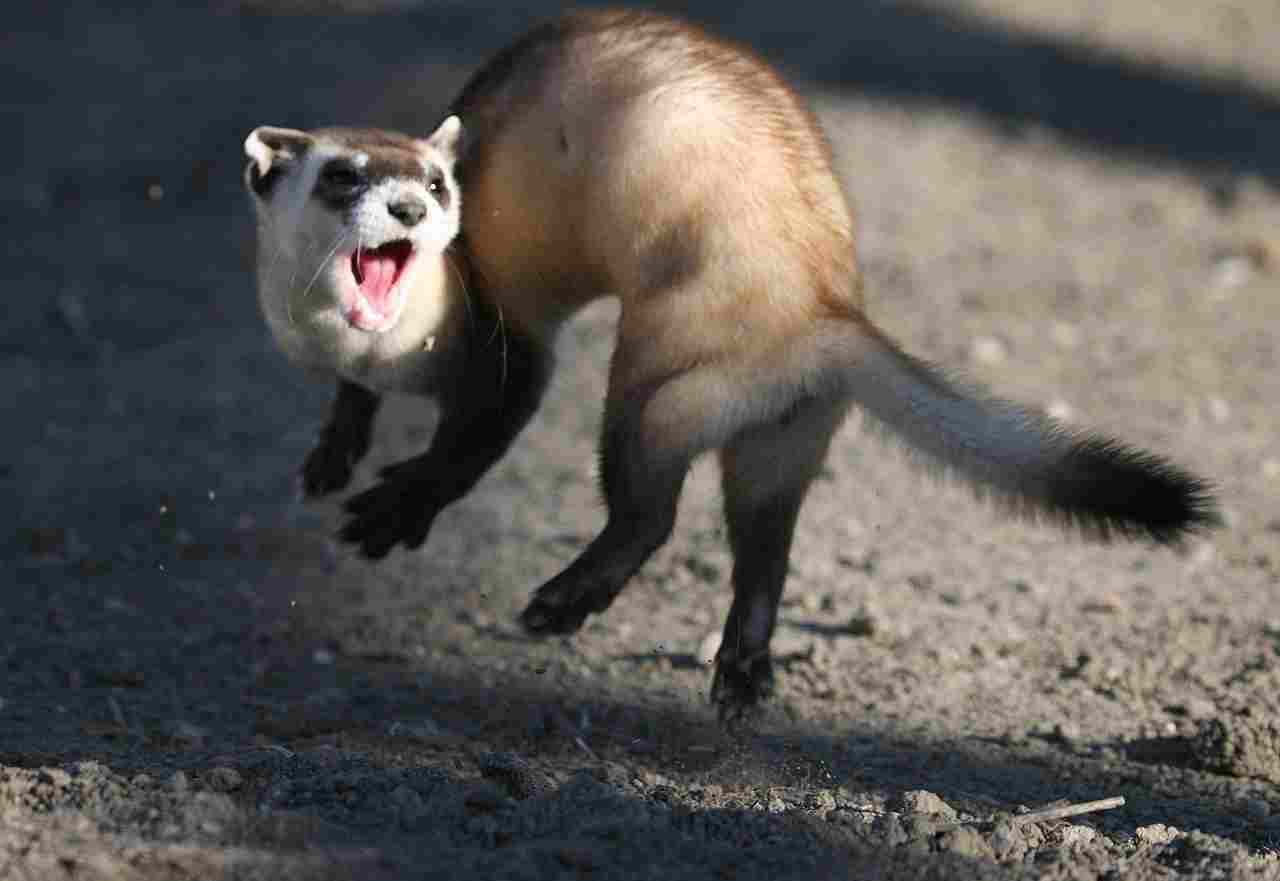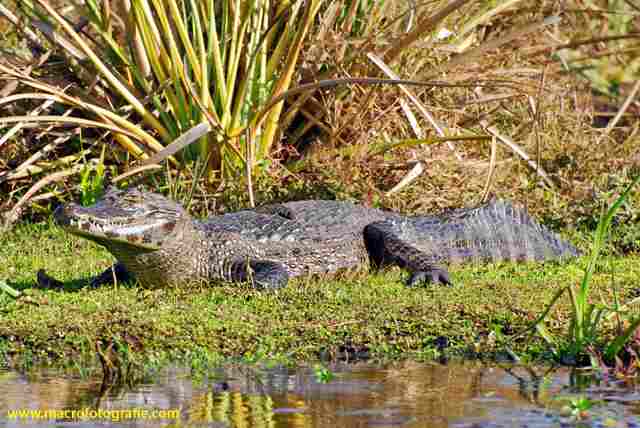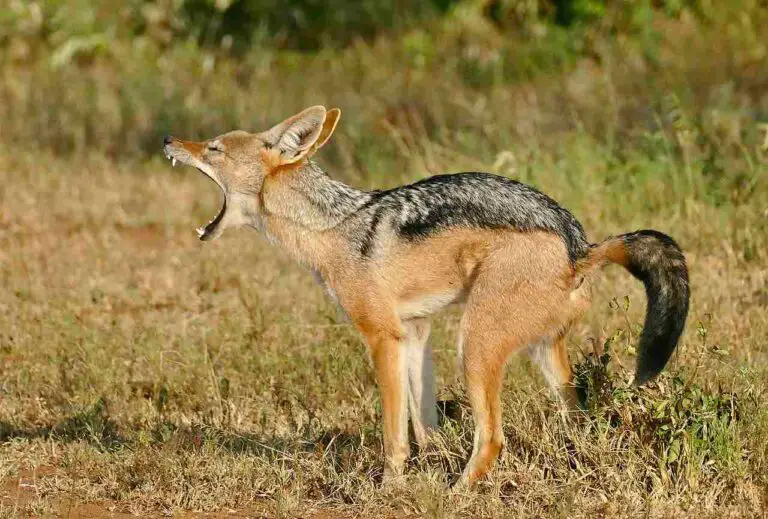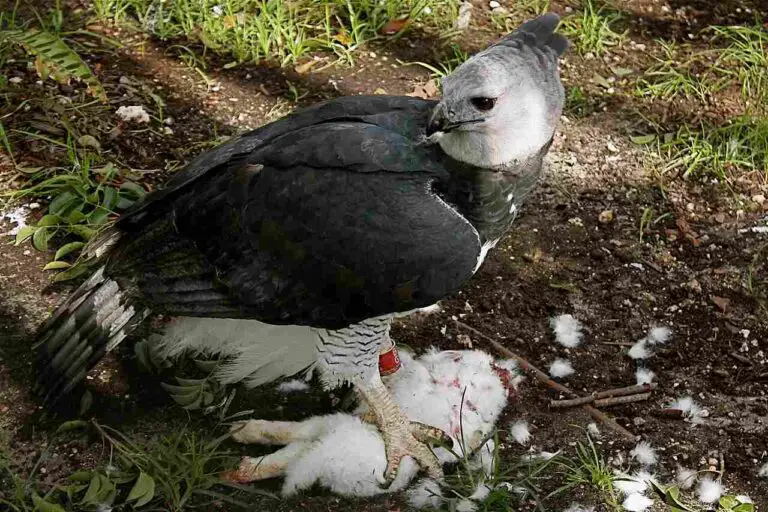Ermine Vs Weasel Size, Weight, Overall Comparison
In considering a potential clash between an ermine and two types of weasels, the least weasel and the long-tailed weasel, we explore the shared and distinct characteristics of these small carnivores. The differences in size and weight become decisive factors in predicting the outcomes of potential confrontations. This analysis outlines these distinctions, emphasizing the factors that contribute to the potential victory of an ermine over a least weasel and its potential disadvantage against a long-tailed weasel.
Ermine vs Least Weasel vs Long-Tailed Weasel: Assessing Differences and Predicting Outcomes
In a potential face-off between an ermine, least weasel, and long-tailed weasel, the outcome is influenced by their shared mustelid traits and distinct variations in size and weight. The ermine, resembling the long-tailed weasel with differences in tail length and underbelly fur color, is likely to prevail over a least weasel due to its larger size and weight. However, the tables may turn when facing a long-tailed weasel, which holds an advantage in size.
I). Ermine’s Characteristics:
– The ermine, resembling the long-tailed weasel with differences in tail length and underbelly fur color, is a small carnivore known for its agility and hunting prowess. It exhibits similarities to both the least weasel and long-tailed weasel.
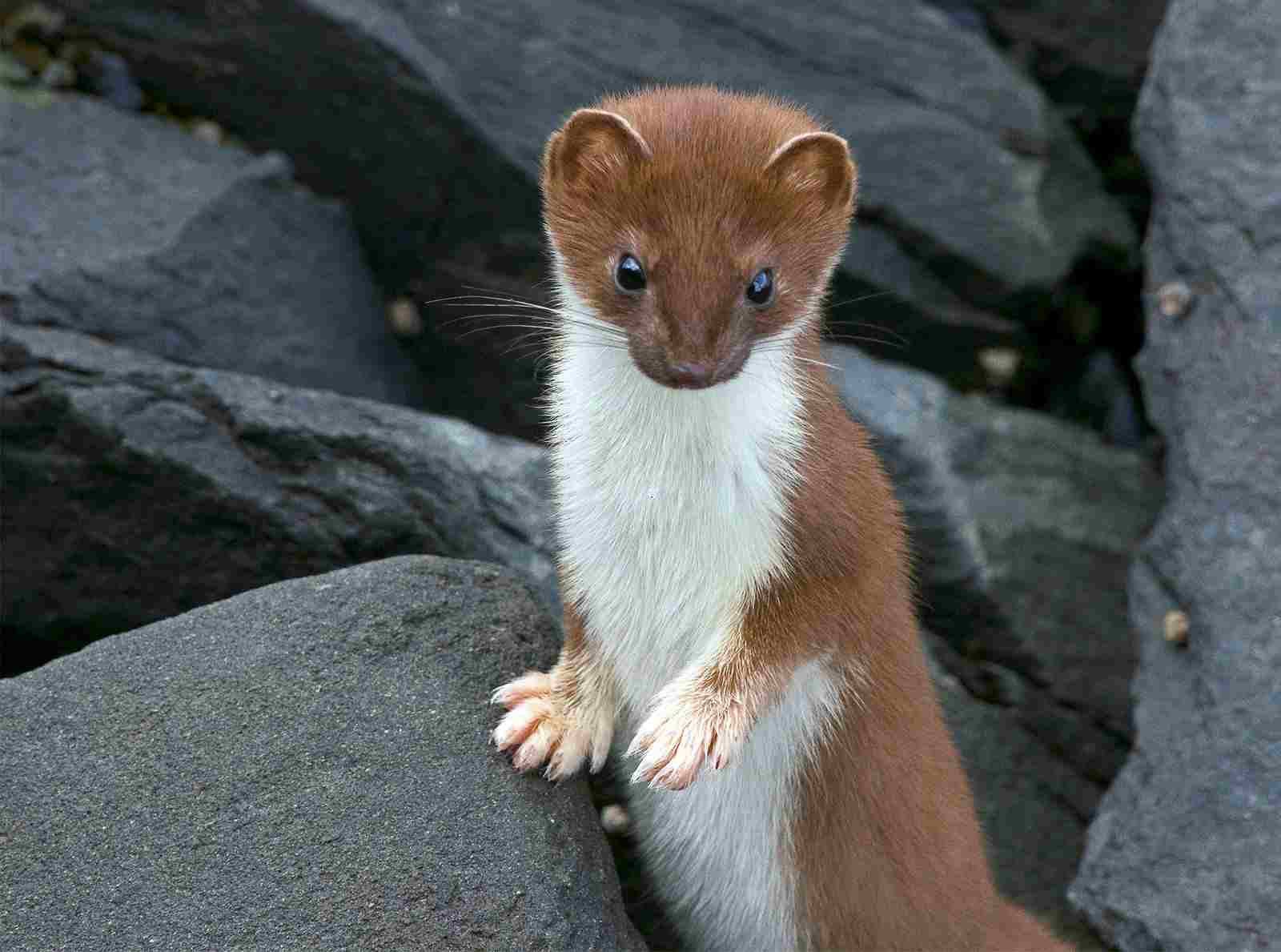
II). Least Weasel’s Characteristics:
– Least weasels are the smallest of the three, characterized by their diminutive size, slender bodies, and short tails. While agile and formidable hunters, their size may put them at a disadvantage in certain confrontations.
III). Long-Tailed Weasel’s Characteristics:
– Long-tailed weasels, larger than least weasels, possess elongated bodies and, as the name suggests, longer tails. Their increased size provides advantages in terms of strength and potential dominance in confrontations.
IV). Ermine vs Least Weasel:
– In a direct confrontation between an ermine and a least weasel, the ermine’s larger size and weight are likely to contribute to its victory. The increased physical prowess of the ermine positions it as the dominant force in this scenario.
V). Ermine vs Long-Tailed Weasel:
– When facing a long-tailed weasel, the ermine’s size disadvantage may lead to a less favorable outcome. The long-tailed weasel’s greater size and weight give it an advantage in strength, potentially tipping the scales in its favor.

VI). Real-World Resemblance:
– The ermine closely resembles the long-tailed weasel, with differences primarily observed in tail length and underbelly fur color. These resemblances highlight their shared mustelid characteristics while underlining the significance of size and weight differences in determining outcomes.
VII). Overall Dynamics:
– In a potential confrontation, the ermine’s likelihood of success depends on the adversary. While it would likely prevail over a least weasel, its smaller size compared to a long-tailed weasel may result in a less favorable outcome. These dynamics showcase the nuanced interactions within the mustelid family, where size and weight play decisive roles in determining the outcomes of potential confrontations.
*Details of Comparison
| Criteria | Ermine | Weasel |
| Appearance | Color-changing fur, white in winter with a black-tipped tail |
Brown fur without a complete color change
|
| Size (inches) | Generally larger (7-12 inches) |
Smaller (4.5-10 inches)
|
| Weight (ounces) | Heavier (2.5-7 ounces) |
Lighter (1-4.5 ounces)
|
| Bite Force (PSI) | Stronger bite force (approx. 150 PSI) |
Weaker bite force
|
| Physical Offensive Advantages | Climbing, swimming, strong bite |
Relies on speed and agility
|
| Physical Defensive Advantages | Color-changing fur, musky odor |
Agility, speed, musky odor
|
| Speed (mph) | Faster (up to 20 mph) |
Slower (10-15 mph)
|
| Agility | Highly agile | Extremely agile |
| Senses | Keen senses of sight, smell, and hearing |
Rely on acute senses
|
| Overall Physical Capacity | Broader set of physical capacities |
Nimble and swift approach
|
| Habitat Preference(s) | Adaptable, slight preferences |
Adaptable, slight preferences
|
| Tracks | Larger tracks with a tail drag mark |
Smaller tracks with a short tail drag mark
|
| Lifespan (years) | Longer (2-4 years) |
Shorter (1-2 years)
|
| Mode of Feeding | Carnivorous, preys on small mammals and birds |
Carnivorous, preys on small rodents and birds
|
| Intelligence | Intelligent hunting strategies |
Intelligent hunting techniques
|
| Social Behavior | Generally solitary |
Predominantly solitary with limited social interactions
|
| Mode of Reproduction | Polygamous mating system |
Polygamous mating system
|
| Parental Behavior | Maternal care and nest-building |
Maternal care and nest-building
|
| Proximity to Human-Inhabited Areas | Adaptable to various environments |
Adaptable to various environments
|
| Behavior Toward Humans | Elusive, avoids direct contact |
Avoids direct contact, prefers hiding or fleeing
|
| Danger Posed to Humans | Minimal danger, may bite if threatened |
Generally not considered dangerous, rare bites in self-defense
|
| Associated Precautions | Observe from a distance, avoid provoking defensive behaviors |
Cautious and non-intrusive approaches if encountered
|
| Conservation Status | Generally considered least concern |
Generally considered least concern
|
Key Points
- Both ermines and weasels belong to the Mustelidae family and Mustela genus.
- They share a polygamous mating system.
- Neither is considered highly dangerous to humans.
- Ermines generally have a longer lifespan and are larger with a broader set of physical capacities.
- Weasels exhibit smaller tracks, a faster color change, and are generally lighter.
- Both species show adaptability to human-altered environments.
- Their ecological implications include roles as carnivorous hunters, impacting prey populations and maintaining ecological balance.
1. Taxonomy:
Ermine (Mustela erminea): Belongs to the Mustelidae family and Mustela genus. Also known as stoat or short-tailed weasel.
Weasel (Mustela nivalis): Also part of the Mustelidae family and Mustela genus. Known as the least weasel.
2. Appearance:
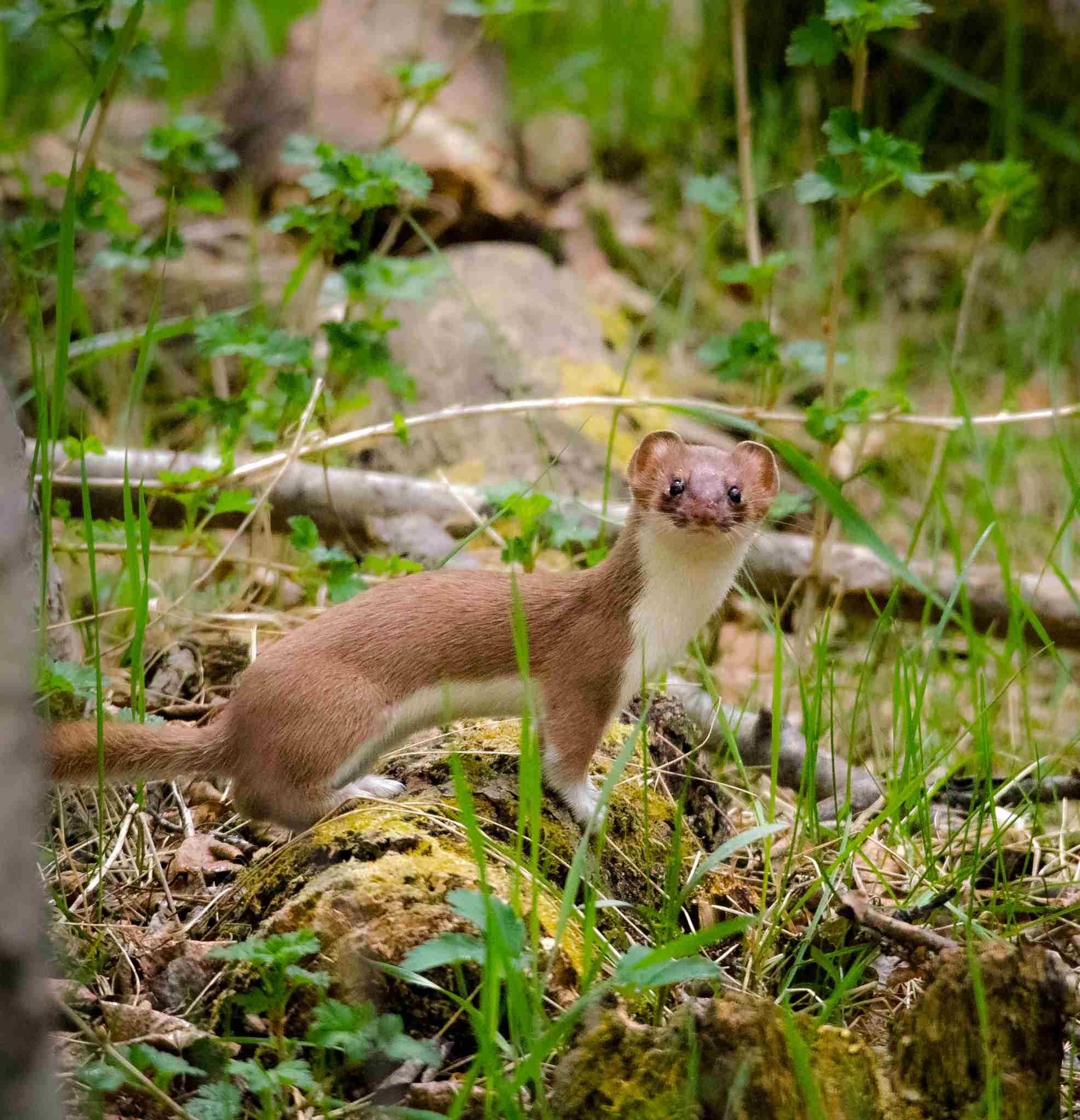
Ermine: Typically has a slender, elongated body with a brown upper fur coat that turns white in winter, except for the black tip on the tail. Their small size and agility aid in hunting.
Weasel: Possesses a small, compact body with brown fur, and it does not undergo a complete color change in winter. It has a shorter tail compared to the ermine.
Comparison: While both have brown fur, the ermine undergoes a seasonal color change to white, a useful adaptation for camouflage in snowy environments.
Ecological Implications: The color adaptation of the ermine aids in both predation and protection, allowing it to blend into its surroundings during different seasons.
3. Size:
Ermine: Larger in size, with a length ranging from 7 to 12 inches (18 to 30 cm) excluding the tail.
Weasel: Smaller in size, measuring around 4.5 to 10 inches (11 to 26 cm) excluding the tail.
Comparison: The ermine is generally larger than the weasel, exhibiting differences in body length.
Ecological Implications: Size differences may impact their prey preferences and competition for resources in their respective ecosystems.
4. Weight:
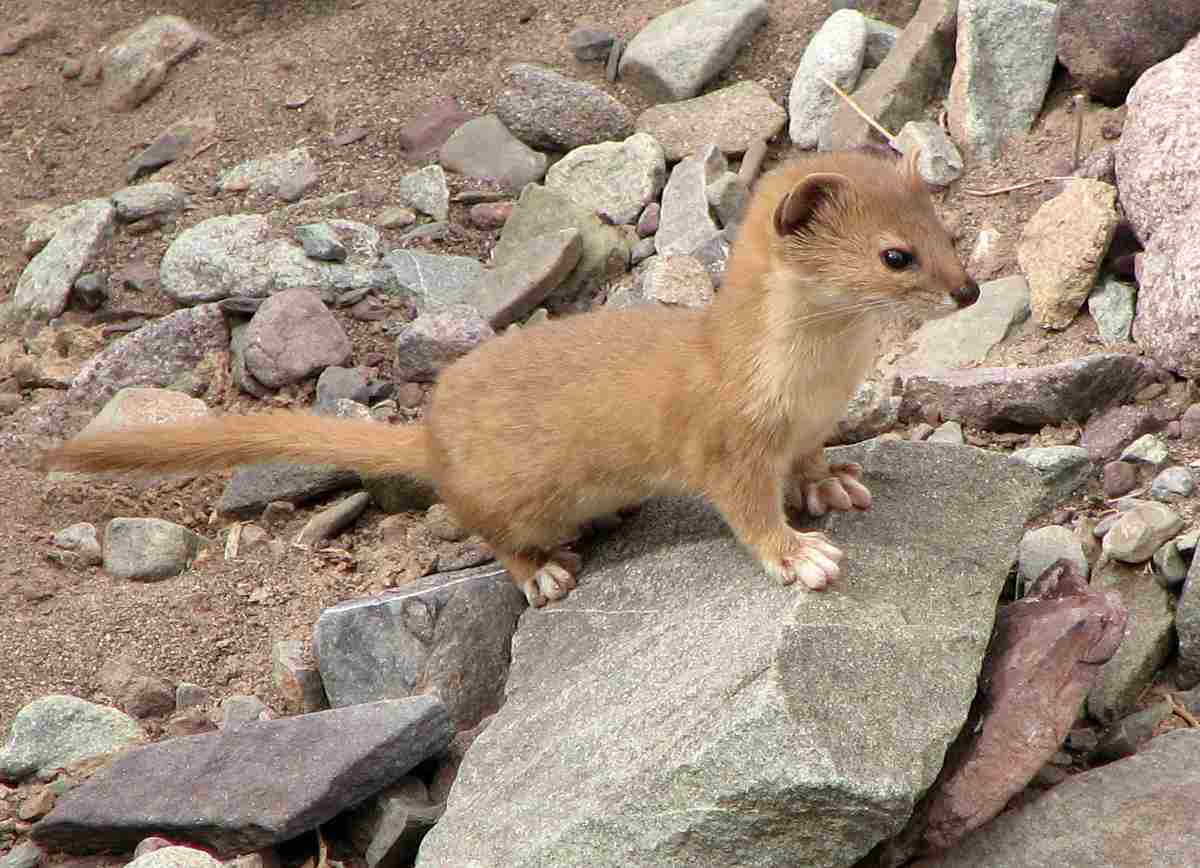
Ermine: Weighs approximately 2.5 to 7 ounces (70 to 200 grams).
Weasel: Weighs around 1 to 4.5 ounces (30 to 130 grams) on average.
Comparison: Ermines are generally heavier than weasels.
Ecological Implications: Weight differences may influence their ability to take down certain prey species and affect their overall ecological role.
5. Bite Force (PSI – Pounds per Square Inch):
Ermine: Estimated to have a bite force of around 150 PSI.
Weasel: Possesses a bite force that varies but is generally lower than that of the ermine.
Comparison: Ermines generally have a stronger bite force compared to weasels.
Ecological Implications: Bite force is crucial for hunting and self-defense, impacting their ability to capture and subdue prey as well as fend off predators.
6. Physical Offensive Advantages:
Ermine: Utilizes a combination of speed, agility, and a strong bite to subdue prey. Can climb trees and swim, providing versatile hunting tactics.
Weasel: Relies on speed and agility to catch prey. While not as powerful as the ermine, it compensates with a swift and nimble hunting approach.
Comparison: Ermines have a broader range of physical offensive advantages, including the ability to climb and swim.
Ecological Implications: The diverse hunting strategies of ermines may impact the types of prey they target, potentially influencing the composition of local ecosystems.
7. Physical Defensive Advantages:
Ermine: Deploys its color-changing fur as a camouflage defense mechanism. Can also emit a musky odor to deter predators.
Weasel: Relies on agility, speed, and evasion as primary defense mechanisms. May emit a musky odor similar to the ermine.
Comparison: Both ermines and weasels employ a musky odor for defense, but the ermine’s color change is a unique defensive adaptation.
Ecological Implications: These defensive mechanisms contribute to the overall survival and adaptation of ermines and weasels in their respective habitats.
8. Speed (Km/hour or Mile/hour):
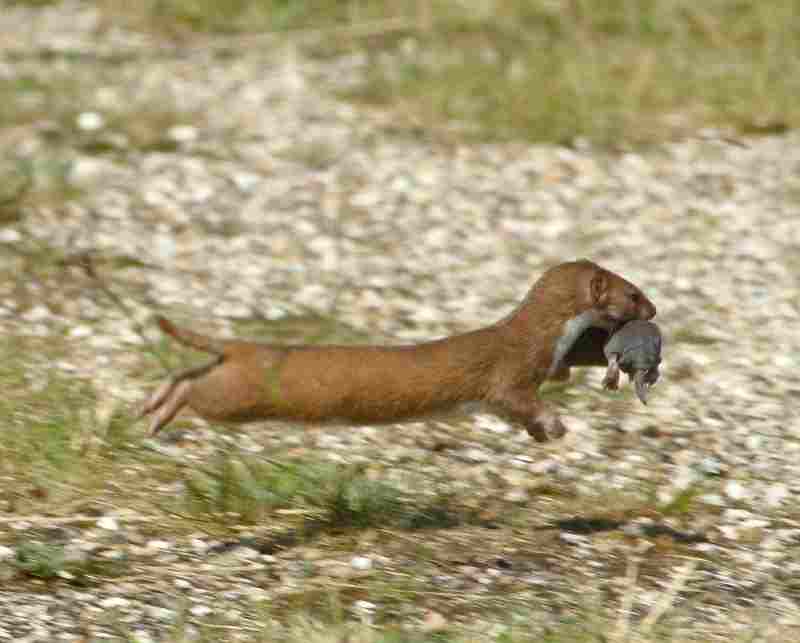
Ermine: Capable of reaching speeds up to 20 miles per hour (32 km/h).
Weasel: Exhibits swift movements, reaching speeds of around 10 to 15 miles per hour (16 to 24 km/h).
Comparison: Ermines are generally faster than weasels.
Ecological Implications: Speed impacts their hunting success and ability to evade predators, influencing their role in maintaining ecological balance.
9. Agility:
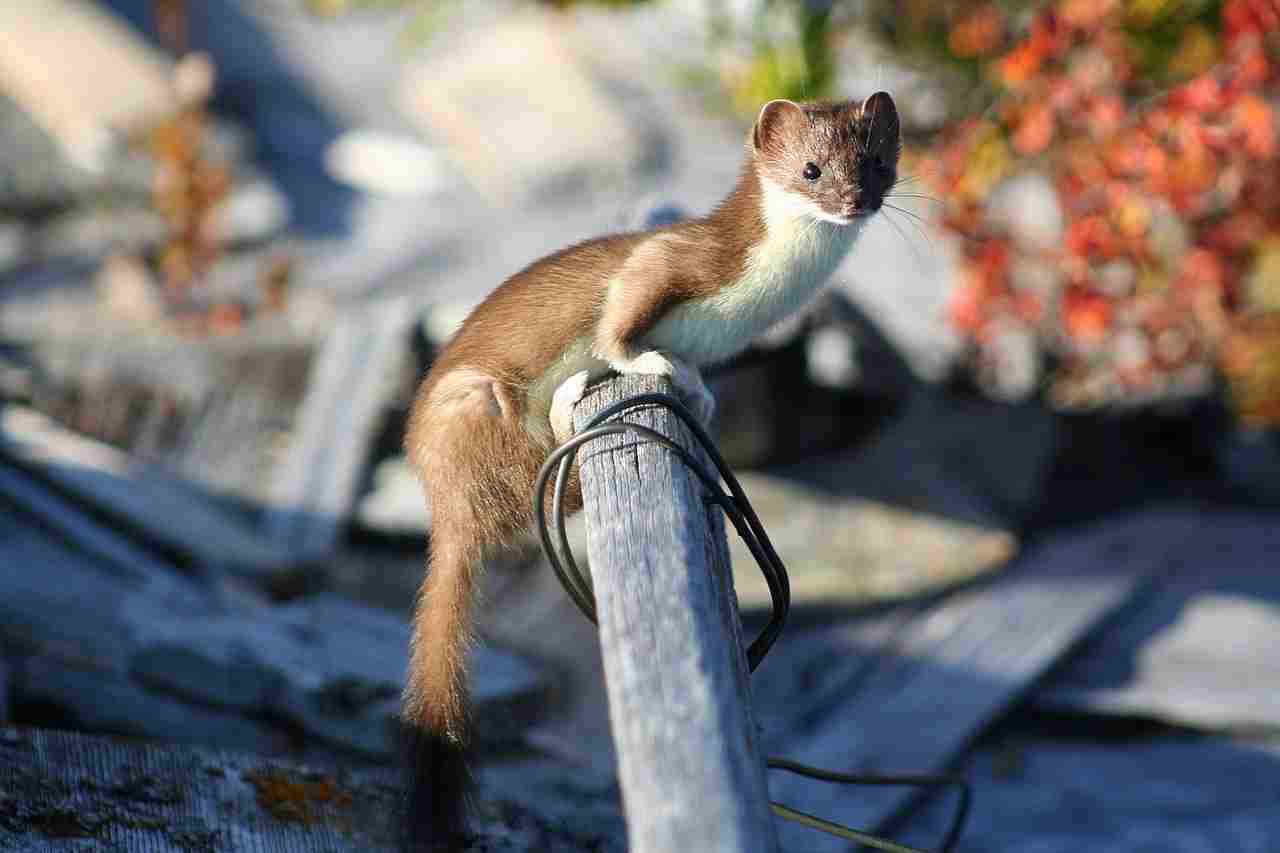
Ermine: Highly agile, able to climb trees and navigate through various terrains with ease.
Weasel: Extremely agile, capable of making sharp turns and maneuvers during pursuit of prey.
Comparison: Both ermines and weasels display exceptional agility, adapted for hunting in diverse environments.
Ecological Implications: Agility enhances their efficiency as predators, affecting their ability to catch agile prey and navigate their ecosystems effectively.
10. Senses:
Ermine: Possesses keen senses of sight, smell, and hearing, contributing to efficient hunting and navigation.
Weasel: Exhibits well-developed senses, crucial for detecting prey and avoiding predators.
Comparison: Both ermines and weasels rely on acute senses for survival.
Ecological Implications: Enhanced senses contribute to their success in hunting and avoiding potential threats in their respective ecosystems.
11. Overall Physical Capacity:
Ermine: Combines speed, agility, strong bite, and color-changing fur for versatile survival strategies.
Weasel: Relies on swift movements, agility, and a nimble approach to hunting.
Comparison: Ermines generally have a broader set of physical capacities.
Ecological Implications: The overall physical capacity influences their roles as predators and their impact on the ecosystem.
12. Habitat Preference(s):
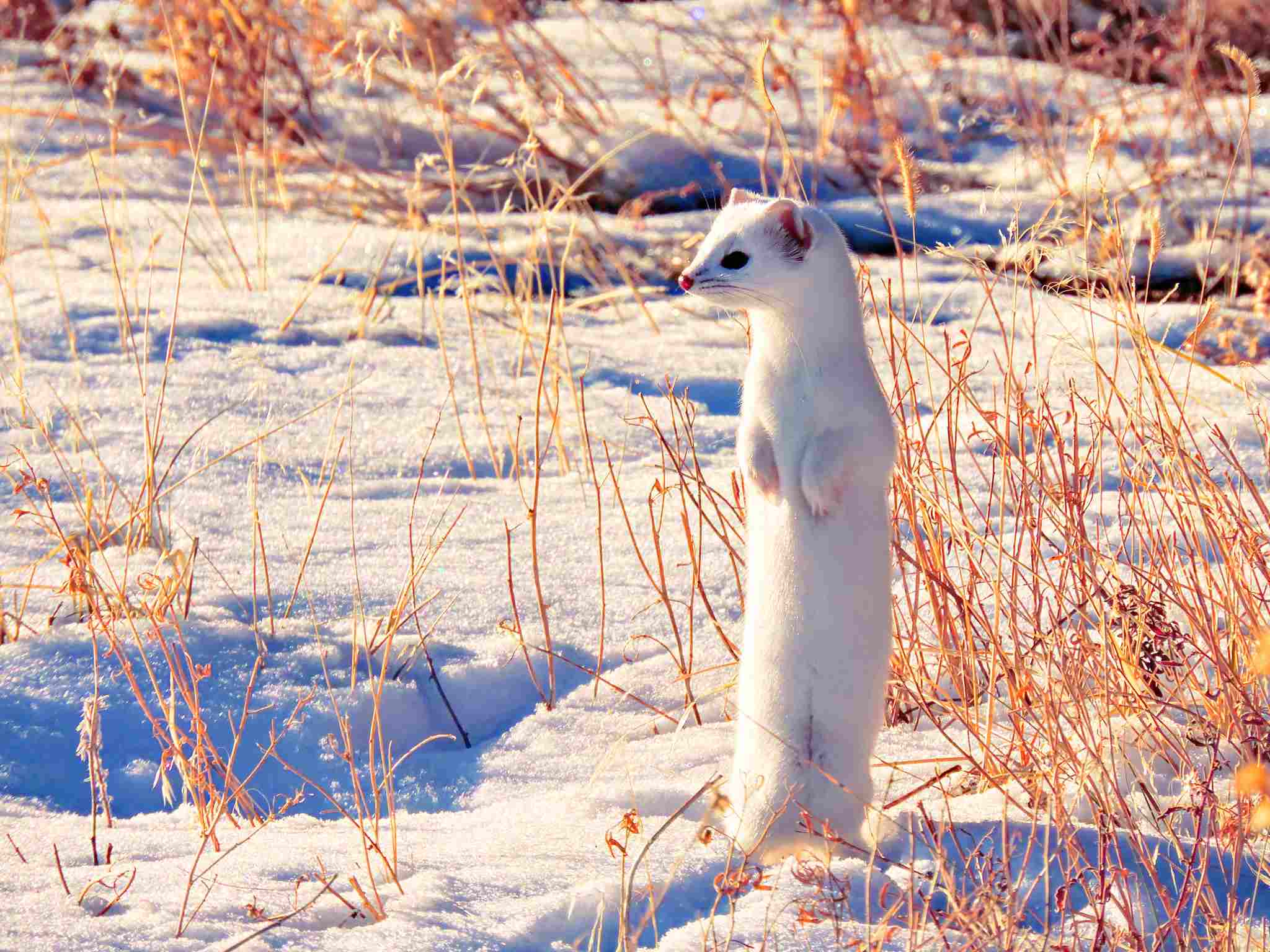
Ermine: Thrives in a variety of habitats, including forests, grasslands, and tundra. Adaptable to diverse environmental conditions.
Weasel: Prefers grasslands, meadows, and fields but can adapt to various environments.
Comparison: Both species show adaptability but may exhibit slight habitat preferences.
Ecological Implications: Habitat preferences impact their distribution and potential competition with other species in specific ecosystems.
13. Tracks:
Ermine: Leaves tracks with distinct imprints of its five-toed feet and a long, slender tail drag mark.
Weasel: Leaves tracks with five-toed footprints, smaller than those of the ermine, often with a short tail drag mark.
Comparison: While both have similar track patterns, the size differences in tracks can help distinguish between ermines and weasels.
Ecological Implications: Tracking patterns contribute to the study of their presence in certain areas, aiding ecological research and conservation efforts.
14. Lifespan:
Ermine: Typically lives around 2 to 4 years in the wild.
Weasel: Has a shorter lifespan, averaging 1 to 2 years in the wild.
Comparison: Ermines generally have a longer lifespan compared to weasels.
Ecological Implications: Differences in lifespan may influence population dynamics, reproductive strategies, and overall ecological impact.
15. Mode of Feeding:
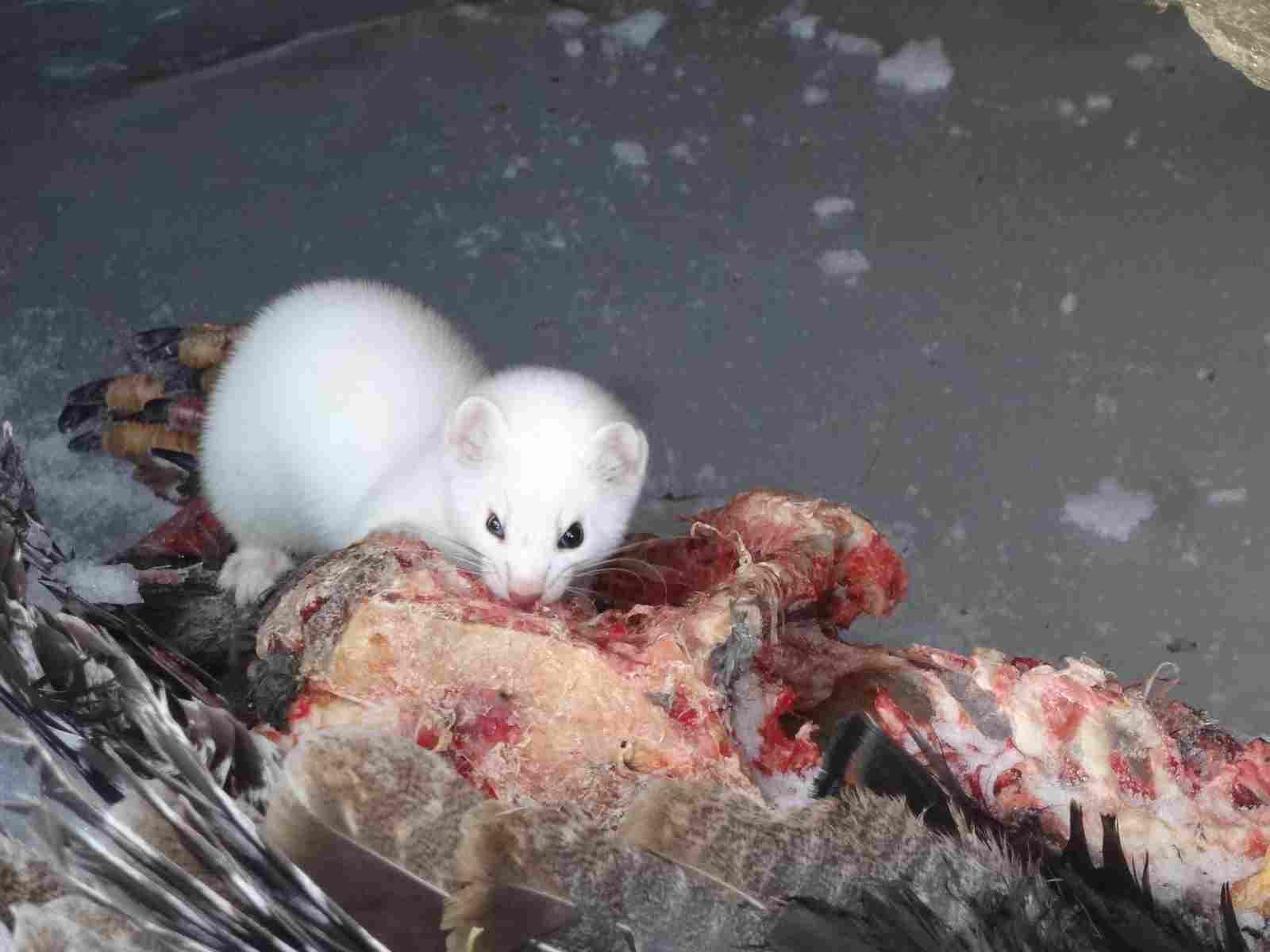
Ermine: Carnivorous, preying on small mammals, birds, and insects.
Weasel: Also carnivorous, feeding on small rodents and birds.
Comparison: Both ermines and weasels share a similar mode of feeding, primarily as carnivorous hunters.
Ecological Implications: Their carnivorous nature contributes to controlling populations of smaller animals in their ecosystems.
16. Intelligence:
Ermine: Exhibits intelligent hunting strategies, including ambushes and adapting to different prey.
Weasel: Displays intelligence in hunting techniques, using speed and agility to capture prey.
Comparison: Both ermines and weasels demonstrate intelligence in their hunting behaviors.
Ecological Implications: Intelligence in hunting contributes to their effectiveness as predators, influencing prey populations in their ecosystems.
17. Social Behavior:
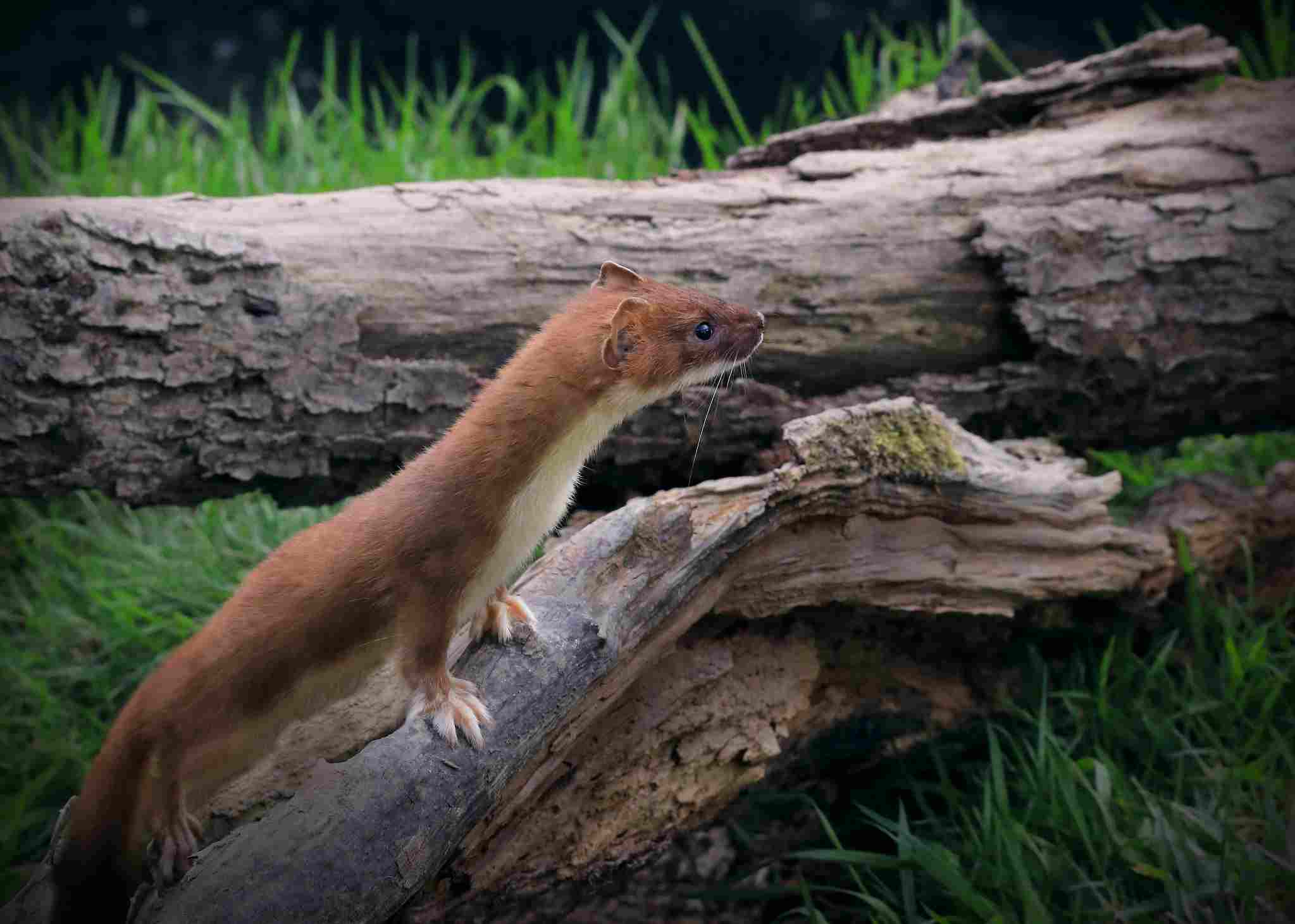
Ermine: Generally more solitary but may tolerate proximity during mating seasons.
Weasel: Often solitary, with limited social interactions outside of the mating season.
Comparison: Both species are predominantly solitary, with limited social interactions.
Ecological Implications: Solitary behavior impacts their territoriality, resource utilization, and potential competition with other individuals of the same species or different species.
18. Mode of Reproduction:
Ermine: Typically exhibits a polygamous mating system, with males seeking multiple mates during the breeding season.
Weasel: Also follows a polygamous mating system, with males mating with multiple females.
Comparison: Both ermines and weasels share a polygamous mode of reproduction.
Ecological Implications: The polygamous mating system may influence population dynamics and genetic diversity within their respective populations.
19. Parental Behavior:
Ermine: Females construct nests for their young and provide care until the kits are old enough to hunt on their own.
Weasel: Females create nests for their offspring, providing maternal care until the young are self-sufficient.
Comparison: Both species exhibit maternal care and nest-building behavior.
Ecological Implications: Parental care contributes to the survival and well-being of offspring, impacting population dynamics.
20. Proximity to Human-Inhabited Areas:
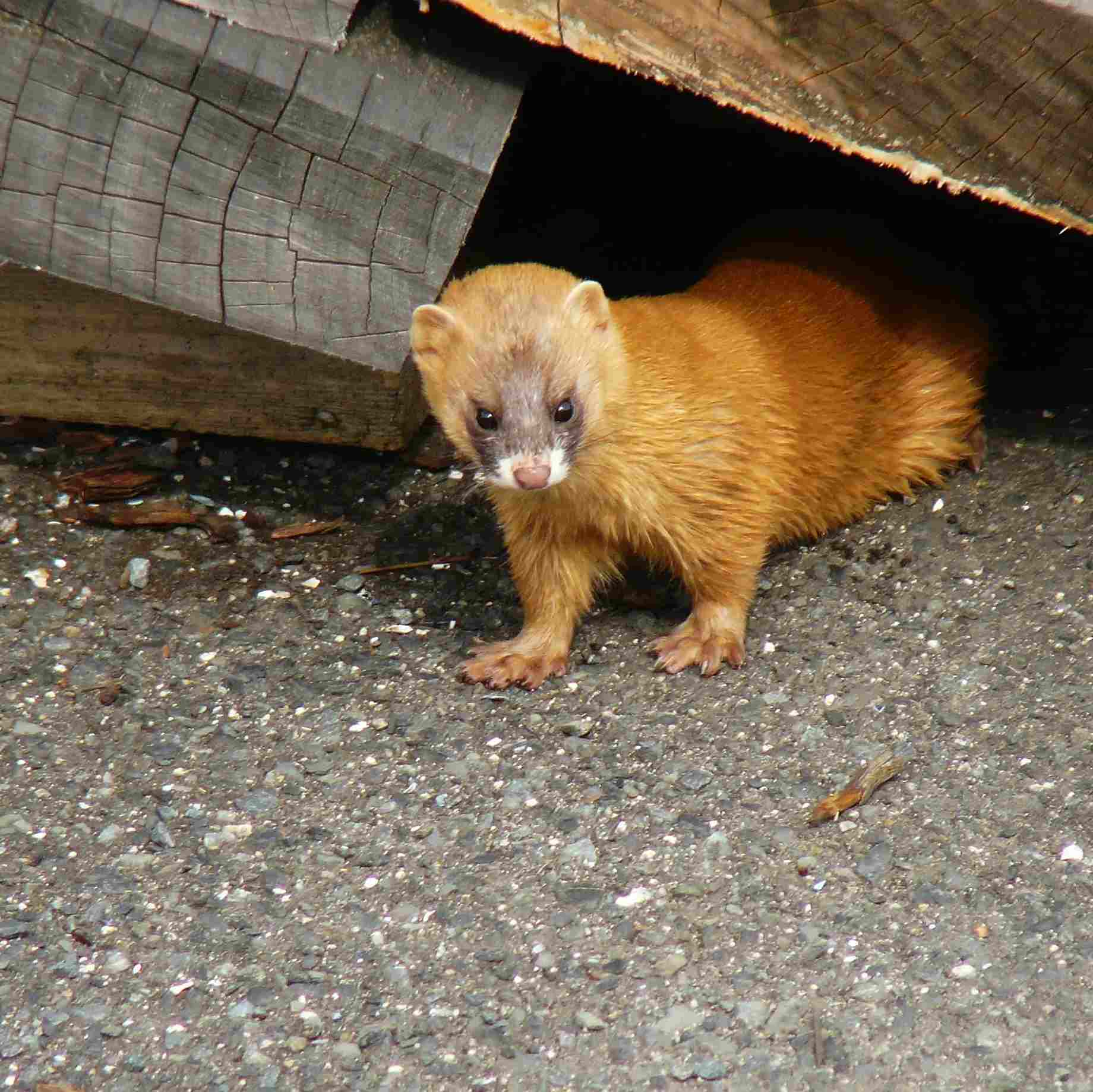
Ermine: Can be found in various habitats, including rural and suburban areas, adapting to human presence.
Weasel: Similarly adapts to human-inhabited areas, often encountered in fields, gardens, and agricultural landscapes.
Comparison: Both ermines and weasels can tolerate and adapt to human-altered environments.
Ecological Implications: Their ability to coexist with humans may affect their exposure to human-induced threats and influence local ecosystems.
21. Behavior Toward Humans:
Ermine: Generally elusive and avoids direct contact with humans, but may enter human structures in search of food.
Weasel: Often avoids direct contact with humans, preferring to stay hidden or flee when encountered.
Comparison: Both species tend to avoid direct interaction with humans.
Ecological Implications: This behavior reduces the likelihood of conflicts with humans, contributing to their ability to coexist in shared environments.
22. Danger Posed to Humans:
Ermine: Generally poses minimal danger to humans; however, may bite if cornered or threatened.
Weasel: Generally not considered dangerous to humans; bites are rare and usually occur in self-defense.
Comparison: Neither ermines nor weasels are considered highly dangerous to humans.
Ecological Implications: Their low risk to humans contributes to their potential coexistence in shared habitats without posing significant threats.
23. Associated Precautions:
Ermine: If encountered, it is advisable to observe from a distance to avoid causing stress or provoking defensive behaviors.
Weasel: Similar precautions apply, emphasizing respectful observation from a distance.
Comparison: Both species require cautious and non-intrusive approaches if encountered.
Ecological Implications: Respecting their space minimizes human impact on their behavior and ensures their ecological roles remain undisturbed.
24. Conservation Status:
Ermine: Generally considered a species of least concern, with stable populations in many regions.
Weasel: Also often classified as a species of least concern, exhibiting stable populations.
Comparison: Both ermines and weasels are not currently considered threatened or endangered.
Ecological Implications: Stable populations suggest a relatively balanced relationship with their ecosystems, highlighting the absence of significant conservation concerns.
Summary of Comparison
Appearance:
Ermine has a color-changing fur, turning white in winter with a black-tipped tail.
Weasel maintains a brown fur, without a complete color change.
Size:
Ermine is generally larger (7-12 inches) compared to the weasel (4.5-10 inches).
Weight:
Ermine is heavier (2.5-7 ounces) than the weasel (1-4.5 ounces).
Bite Force (PSI):
Ermine has a stronger bite force (approx. 150 PSI) compared to the weasel.
Physical Offensive Advantages:
Ermine utilizes speed, agility, and a strong bite, able to climb trees and swim.
Weasel relies on speed and agility.
Physical Defensive Advantages:
Ermine uses color-changing fur and emits a musky odor.
Weasel relies on agility and speed, also emitting a musky odor.
Speed:
Ermine is faster (up to 20 mph) than the weasel (10-15 mph).
Agility:
Both ermines and weasels exhibit exceptional agility.
Senses:
Both rely on keen senses of sight, smell, and hearing.
Overall Physical Capacity:
Ermine has a broader set of physical capacities.
Habitat Preference(s):
Both are adaptable but may exhibit slight habitat preferences.
Tracks:
Similar track patterns, but ermine tracks are larger.
Lifespan:
Ermine generally lives longer (2-4 years) than the weasel (1-2 years).
Mode of Feeding:
Both are carnivorous, preying on small mammals and birds.
Intelligence:
Both demonstrate intelligence in hunting techniques.
Social Behavior:
Both are predominantly solitary with limited social interactions.
Mode of Reproduction:
Both follow a polygamous mating system.
Parental Behavior:
Both exhibit maternal care and nest-building behavior.
Proximity to Human-Inhabited Areas:
Both can adapt to and tolerate human-altered environments.
Behavior Toward Humans:
Both tend to avoid direct interaction with humans.
Danger Posed to Humans:
Neither ermines nor weasels are highly dangerous to humans.
Associated Precautions:
Similar precautions apply for respectful observation from a distance.
Conservation Status:
Both are generally considered species of least concern.
Conclusion
I. Similarities
– Both ermines and weasels belong to the Mustelidae family and Mustela genus. – They share a polygamous mating system. – Generally, they are not considered highly dangerous to humans.
II. Differences
– Ermines are generally larger and have a longer lifespan compared to weasels. – Ermines undergo a seasonal color change for camouflage, while weasels do not. – Ermines have a broader range of physical offensive advantages, including climbing and swimming. – Weasels have a shorter lifespan and smaller tracks than ermines.
